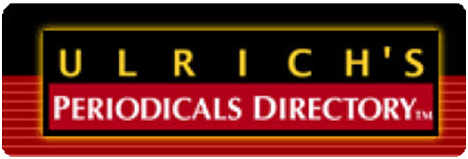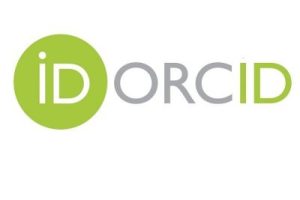ASSESSMENT OF THE EFFECTIVENESS OF THE INFORMATION AND DIGITAL ENVIRONMENT OF GENERAL SECONDARY EDUCATION INSTITUTIONS: THE GREAT BRITAIN EXPERIENCE
DOI:
https://doi.org/10.14308/ite000772Keywords:
digitalisation, school information and digital environment, assessment, Self Review Framework, Great BritainAbstract
The article is devoted to the system of assessment of the school's information and digital environment (IDE) on the example of the Great Britain experience. In order to maintain and develop a modern IDE, it is necessary to assess its state, which will help determine: the effectiveness of technology use; strengths and weaknesses of the school's digitalisation policy; further ways of its effective digitalisation. The article presents the Naace SRF (Self Review Framework) self-assessment tool, which has been created and used by Great Britain educators for over 20 years, as well as its structural elements, which were developed by various educational organisations (the Office for Standards in Education, Children's Services and Skills; education agencies; educational institutions; the Trust, etc.) The National Digital Strategies and the views of the education community were taken into account during development. Control questions are provided to help schools prepare in advance for the SRF self-assessment process. The author describes the assessment process carried out on the Naace online platform, which consists of four levels, presents general questions asked to school representatives covering the following areas: leadership and management; teaching and learning with technology; assessment of digital potential; protection of digital data; professional development; resources and technologies. The ease of use of the tool has been determined, given that the assessment data is stored in the system, so schools can independently monitor the development of digitalisation of their educational institution and formulate further digital plans. In addition, the System has developed the NaaceMark quality mark, which motivates schools to increase their level of technological development. An analysis of existing systems for assessing the effectiveness of the school's information and digital environment will help to create the own tool that will meet the requirements and needs of Ukrainian educators.
Downloads
Metrics
References
2. Биков В. Ю., Ляшенко О. І., Литвинова С. Г., Луговий В. І., Мальований Ю. І., Пінчук О. П., Топузов О. М. Науково-методичне забезпечення цифровізації освіти України: стан, проблеми, перспективи за заг. ред. Кременя В. Г.. Київ: ІЦО НАПН України, 2022. 96 с. URL: https://lib.iitta.gov.ua/id/eprint/733151 (дата звернення: 30.08.2023).
3. Геревенко А. М. Використання цифрових інструментів для створення сучасного освітнього контенту. Аналітичний вісник у сфері освіти й науки: довідковий бюлетень Випуск 17, 2023 ДНПБ України ім. В.О. Сухомлинського м. Київ, Україна 93 практичний онлайн-форум «Інноваційні трансформації в сучасній освіті: виклики, реалії, стратегії» / Нац. центр «Мала академія наук України». Київ, 2022. URL: https://lib.iitta.gov.ua/id/eprint/732941 (дата звернення: 30.08.2023).
4. Гуралюк А.Г., Пономаренко Л.О., Педагогіка як інноваційний освітній тренд. Аналітичний вісник у сфері освіти й науки: довідковий бюлетень Випуск 17, 2023 ДНПБ України ім. В.О. Сухомлинського м. Київ, Україна
5. Овчарук О.В., Гриценчук О.О., Іванюк І.В., Карташова Л.А., Кравчина О.Є., Лещенко М.П., Малицька І.Д. Розвиток інформаційно-цифрового навчального середовища закладу загальної середньої освіти : методичний посібник / Київ: ІЦО НАПН України. 2022. 223 с. URL: https://lib.iitta.gov.ua/734207 (дата звернення: 30.08.2023).
6. Anna Mišianiková, Veronika Hubenakova, Marian Kireš, Maria Babincakova. Assessment of Digitalization in Primary and Secondary Schools by SELFIE Survey as a part of School Leaders Training November 2021 Conference: 2021 19th International Conference on Emerging eLearning Technologies and Applications (ICETA) doi:10.1109/ICETA54173.2021.9726580
7. Digital Education at School in Europe European Commission/EACEA/Eurydice, 2019. Digital Education at School in Europe. Eurydice Report. Luxembourg: Publications Office of the European Union. URL: https://op.europa.eu/en/publication-detail/-/publication/d7834ad0-ddac-11e9-9c4e01aa75ed71a1/language-en/format-PDF/source-105790537
8. Digital strategies in education across OECD countries: Exploring education policies on digital technologies, OECD Education Working Papers No 226, 2020, doi:https://dx.doi.org/10.1787/33dd4c26-en
9. Haya Altaleb, Malak Shatnawi and Zoltán Rajnai, Digital Education: Governments’ Strategies, Teaching Tools in the European Union and a Case Study of Digital Transformation in Budapest Interdisciplinary Description of Complex Systems : INDECS, Vol. 21 No. 2, 2023 doi: https://doi.org/10.7906/indecs.21.2.3
10. Isaiah T. Awidi1, Mark Paynter An Evaluation of the Impact of Digital Technology Innovations on Students’ Learning: Participatory Research Using a Student-Centred Approach August 2022 Technology, Knowledge and Learning, doi:10.1007/s10758-022-09619-5
11. Monitoring progress and impact of the strategy School Resource Management: Building A Stronger System, Department for Education, June 2023, URL: https://assets.publishing.service.gov.uk/government/uploads/system/uploads/attachment_data/file/1161148/Monitoring_progress_and_impact_of_the_strategy.pdf
12. NAACE The Education Technology Association, URL: https://www.naace.co.uk/about.html
13. Technology in UK schools. A report for Lenovo, January 2020. URL: https://www.lenovo.com/origind8/sites/default/files/2020-01/Technology-in-schools-whitepaper.pdf
14. The Naace Self Review Framework (SRF), URL: https://www.naace.co.uk/si-srf.html
15. Thomas Langenfeld, Jill Burstein, Alina A. von Davier, Digital-First Learning and Assessment Systems for the 21st Century Front. Educ., 09 May 2022
Sec. Assessment, Testing and Applied Measurement
Volume 7 – 2022, doi:https://doi.org/10.3389/feduc.2022.857604
Downloads
Published
How to Cite
Issue
Section
License
This work is licensed under a Creative Commons Attribution-NonCommercial-ShareAlike 4.0 International License.






























